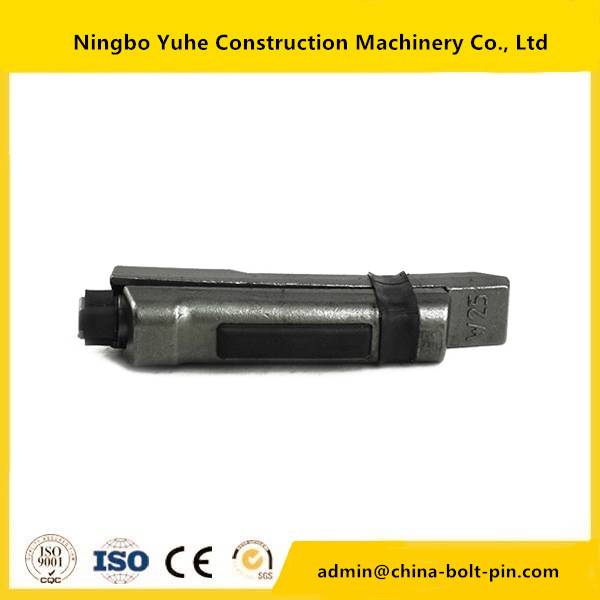A grapple attachment will typically be much more productive in most applications (demolition, rock handling, scrap handling, land clearing, etc.) than a thumb and bucket. For demolition and serious material handling, it is the way to go.
Productivity will be much better with a grapple in applications where you are handling the same material over and over and don’t need to dig with the machine. It has the capability to grab more material in a pass than with the bucket/thumb combination.
If the application demands precise material handling, however, a rotating grapple may be the better choice. It offers up to 360° rotation, which allows the operator to grab from any angle without moving the machine.
There are many different tine configurations available. Typically, if a customer is working with smaller debris, a larger number of tines is the way to go. Demolition grapples usually have a two-over-three tine configuration for picking larger items. Brush or debris grapples are normally a three-over-four tine design. The more contact area the grapple applies to the load, the more the clamping force will decrease.
There are also plate shell and rib shell designs available. Plate shells are used more in the waste industries vs. the rib shell version, which tends to get material stuck within the ribs. The plate shell stays clean and keeps working longer. However, the depth of the ribs on the ribbed version gives strength to the shells. The ribbed design also allows for increased visibility and screening of material.
Most thumbs are designed to handle just about anything,
https://www.china-bolt-pin.com/excavator-bucket-tooth-pins-for-u-style.html
but certain types can be more productive. For example, if the debris is smaller in nature, a thumb with four tines spaced closer together would be much better than two tines spaced further apart. Larger debris allows for less tines and greater spacing.
The type of material being handled by the grapple will have a major impact on the most appropriate tine configuration. Heavy steel beams and blocks call for a two over three tine configuration. General purpose demolition calls for a three over four tine configuration. Brush, municipal waste and bulky materials call for four over five tines.

Post time: Aug-19-2019